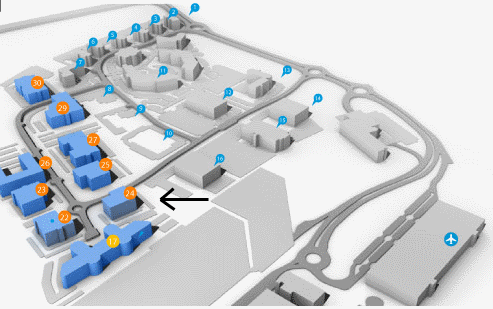Current Size: 100%

- Publications
- Cancer atlases
- 2.2.1 Cancer Registrations
NCR books
- Cancer Atlas
- Acknowledgements
- Foreword
- Summary
- 1. Introduction
- 2. Methods
- 3. Non-melanoma skin cancer
- 4. Breast cancer
- 5. Colorectal cancer
- 6. Lung cancer
- 7. Prostate cancer
- 8. Non-Hodgkin's lymphoma
- 9. Stomach cancer
- 10. Melanoma of the skin
- 11. Bladder cancer
- 12. Head and neck cancer
- 13. Leukaemia
- 14. Pancreatic cancer
- 15. Kidney cancer
- 16. Oesophageal cancer
- 17. Ovarian cancer
- 18. Brain and other central nervous system cancer
- 19. Cancer of the corpus uteri
- 20. Cancer of cervix uteri
- 21. Discussion
- 22. Conclusions and recommendations
- Appendix 1: Relative risks (with 95% confidence intervals) by area characteristic, cancer site and sex
- Appendix 2: Electoral division tables
- Appendix 3: Summary statistics for each cancer site
- Appendix 4: Regions referred to in the atlas
- References
- Index of figures, maps and tables
2.2.1 Cancer Registrations
Northern Ireland
The Northern Ireland Cancer Registry (NICR) was established in 1994 and uses an automated computer system with multiple information sources to collate information on new diagnoses of cancer. Information has been collected for incidence years from 1993 onwards. The three main sources for registration are the Patient Administration System (PAS) used by all the Hospital Trusts, histopathology reports, and death notifications supplied by the General Register Office (GRO). From PAS the Registry obtains demographic information on individual patients along with basic site and behaviour information for each tumour. This information is supplemented by electronic downloads from histopathology and cytopathology laboratories. A major focus of the Registry’s operation is on the verification of the information from a single hospital admission, a single histopathology report or a single death certificate (death-certificate initiated cases). Trained Tumour Verification Officers (TVOs) examine general practitioners’ (GPs) notes for patients who have died from cancer, hospital records for cases identified without histopathology or cytology confirmation and histopathology reports where there is conflicting information or other possible errors. In the event that no further information on death-certificate initiated cases is obtainable the record is included in the Registry but flagged as a death certificate only (DCO) case. These comprised less than 2% of cases in 1995-2007. Follow up of patients is conducted passively by linking cancer incidence data to death certificate information.
In the NICR the information on cancer site received by the Registry has been coded using the Systematized Nomenclature of Medicine (SNOMED) which is used in the UK National Health Service (NHS) and information on cancer morphology has been coded to the second revision of the International Classification of Diseases for Oncology (ICD-O-2) (World Health Organisation, 1990). Cancer site is recoded at the Registry to the tenth revision of the International Classification of Diseases (ICD-10) (World Health Organisation, 1997).
Republic of Ireland
The National Cancer Registry Ireland was established in 1991 and has produced national figures on cancer incidence since 1994. Most registrations are based on “active” data collection, whereby trained Cancer Data Registrars (CDRs), based in hospitals around the country, access a range of data sources to identify all new cancer cases and register all relevant patient, tumour and treatment details. Hospital pathology reports, provided to the Registry shortly after diagnosis, comprise the bulk of information, providing data on approximately 85% of all new cases. Most pathology reports are registered manually by the CDRs but about 10% of pathology reports are now provided in electronic format. Information on non-microscopically diagnosed cases is registered mainly from other hospital sources, principally the Hospital Inpatient Enquiry system (HIPE) as well as records from radiology and oncology departments, medical charts, etc. Most cases (≥95%) are registered in this way. The main non-hospital source of case information is death certificate data. The Registry is provided with all death certificates by the Central Statistics Office (CSO). All cases initially notified by death certificate are followed up with the hospital of death or the certifying doctor and most cases are subsequently found in other data sources. Only a small percentage of cases (<3%) remain classified as notified by death certificate only (DCO). As in the NICR, follow up of patients is passive, where cancer cases are linked to death certificate information provided regularly from the CSO.
Although case data from pathology reports is registered almost immediately after diagnosis, data from other sources can take longer to obtain. Together with essential case checking and data quality assurance, the Registry normally produces definitive statistics for case data a minimum of 18 months to 2 years following the end of year of diagnosis. Currently the completeness of cancer registration for all invasive cancers diagnosed to end 2007 is estimated to be over 96%.
Incident cases are coded according to the third edition of the International Classification of Diseases for Oncology (ICD-O-3) (World Health Organisation, 2000).
Building 6800
Cork Airport Business Park
Kinsale Road, Cork T12 CDF7
Email Contact us here
Tel: +353 (0) 21 4318014
Fax: +353 (0) 21 4318016




